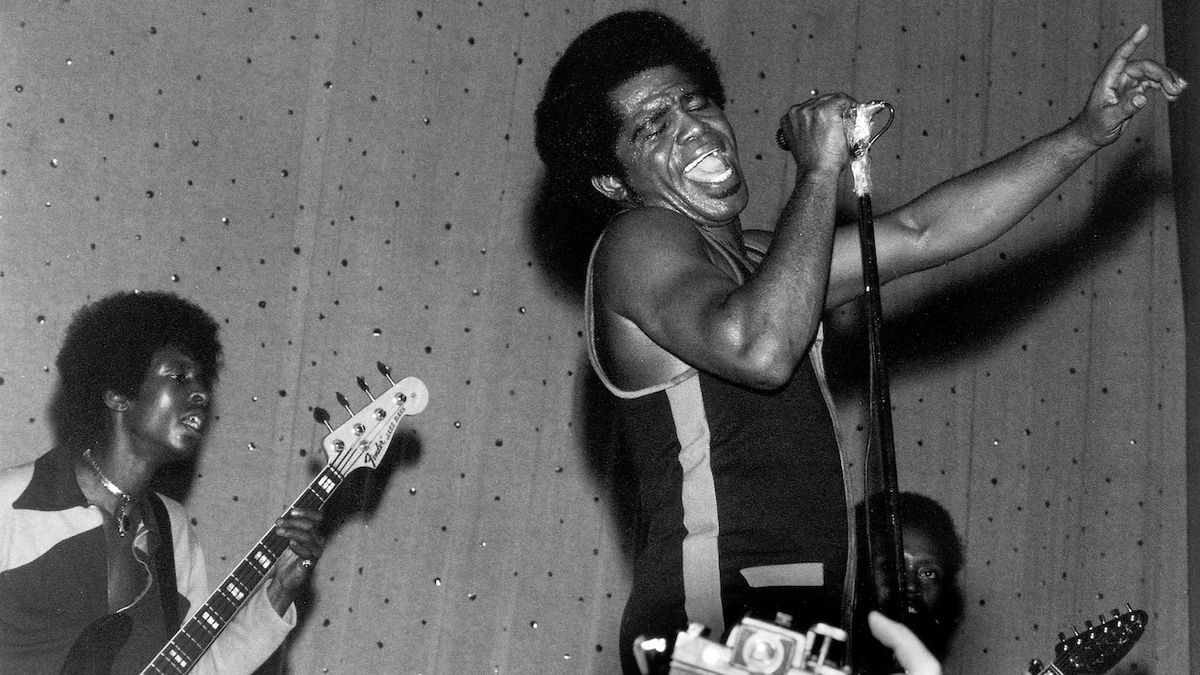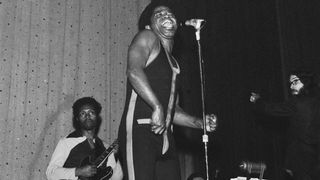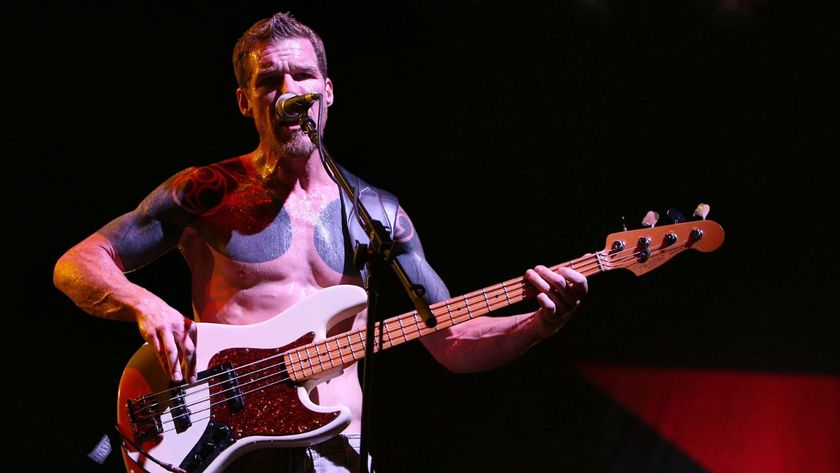“Jimi Hendrix was my superhero, and so I threw a bit of his style into the bassline”: How a young Bootsy Collins took the James Brown bass chair to its busiest level on this Bootsy-fied recut from 1970’s Sex Machine
The first version of the song was recorded in October 1968 with Charles ‘Sweets’ Sherrell on bass

When James Brown passed away in 2006, popular music lost a true icon; the so-called ‘Godfather of Soul’ was a giant of the groove. Alluding to the major musical upheaval of the '60s, one mourner offered, “James Brown was to rhythm what Bob Dylan was to lyrics.”
Although they played together for less than a year, James Brown became somewhat of a father figure to bassist Bootsy Collins, pushing him to become a better musician with each show and take.
“He kept me close, to show me things, as if he knew that I was going to be out there myself one day,” Bootsy told Bass Player. “He showed me as much as he could, without telling me anything.”
A great deal of music flowed from the Brown machine, often on different versions of the same song. A good example is Give It Up or Turnit a Loose. The first version of the song was cut in October 1968, at Miami's famed Criteria Studios, with Charles ‘Sweets’ Sherrell on bass guitar and new drummer Nate Jones sitting in for JB drum institution Clyde Stubblefield.
Sherrell himself had replaced bassist Bernard Odum, ushering in a more aggressive, busy, and syncopated style. While the drum part may be a bit too ‘peekaboo’ to firmly hang your hat on, Jimmy Nolen's syncopated single-note guitar line is a virtual counterpoint to the bassline, and perfect to lock up with as it keeps time in the open spaces. Sherrell's main verse groove, actually repeated twice to match up with the accompanying two-bar guitar phrase.
Brown recut the song in July 1970 to capture what had become a showstopping live staple. Although six other tracks on the Sex Machine album were recorded in concert, this one was cut in the studio, with overdubbed applause.
Still, the energy upgrade is immediate, from the brighter tempo to Phelps ‘Catfish’ Collins's slightly more syncopated single-note guitar line and drummer Clyde Stubblefield's intense issuing of his classic ‘Funky Drummer’-style groove.
Get The Pick Newsletter
All the latest guitar news, interviews, lessons, reviews, deals and more, direct to your inbox!
Catfish's brother, a young William ‘Bootsy’ Collins, gives the biggest push of all: He took the James Brown bass chair to its busiest, most in-your-face level.
In the main verse groove, Bootsy extends the part to a true two-bar phrase (instead of Sherrell's one-bar phrase repeated twice) by ascending to the octave via chord tones and chromatic tones.
Bootsy also adds more notes and bounces off an open A. Note that unlike the bridge harmony, the verse harmony is typically ambiguous because of the lack of a pronounced 3rd (though the horns do touch on some bluesy minor 3rds).
It has been described as D Dorian, D minor, and D9. Catfish alludes to a quick Dm7 chord on the last 16th of his two-bar phrase, but Bootsy, in his climb-up, is obviously thinking of the more Brown-like D9 tonality.
“I think I was a part of the change,” said Bootsy. “Jimi Hendrix was my superhero, and I threw a little bit of his style into the bassline.”

Takin' it to the bridge, Bootsy's bassline continues in a similar, slightly busier vein, cutting loose via climbs to an ear-grabbing octave, heard at 2:29, 3:53, and 4:06 (as the horns hold out a note). To replicate this more raucous approach, again stay rhythmically in tune with the guitar and drum parts, keep breathing, and as Bootsy would say, always aim for the one.
Not every artist got on so well with the Godfather of Soul, of course. Carlos Alomar recently told Guitar World about the time he was asked to “take it to the bridge” by James Brown – and failed to respond.
Chris Jisi was Contributing Editor, Senior Contributing Editor, and Editor In Chief on Bass Player 1989-2018. He is the author of Brave New Bass, a compilation of interviews with bass players like Marcus Miller, Flea, Will Lee, Tony Levin, Jeff Berlin, Les Claypool and more, and The Fretless Bass, with insight from over 25 masters including Tony Levin, Marcus Miller, Gary Willis, Richard Bona, Jimmy Haslip, and Percy Jones.

“It’s one of our best tunes and one of my best basslines”: When Duran Duran fused Chic and Sex Pistols for one of bassist John Taylor’s standout performances

“I'm like the Pablo Escobar of bass. If a dude works on my pedalboard, it's almost like I have to kill him after he's done!” With Rage Against the Machine, Tim Commerford pioneered an all-time iconic bass tone. No wonder he's cagey about his setup
Most Popular











